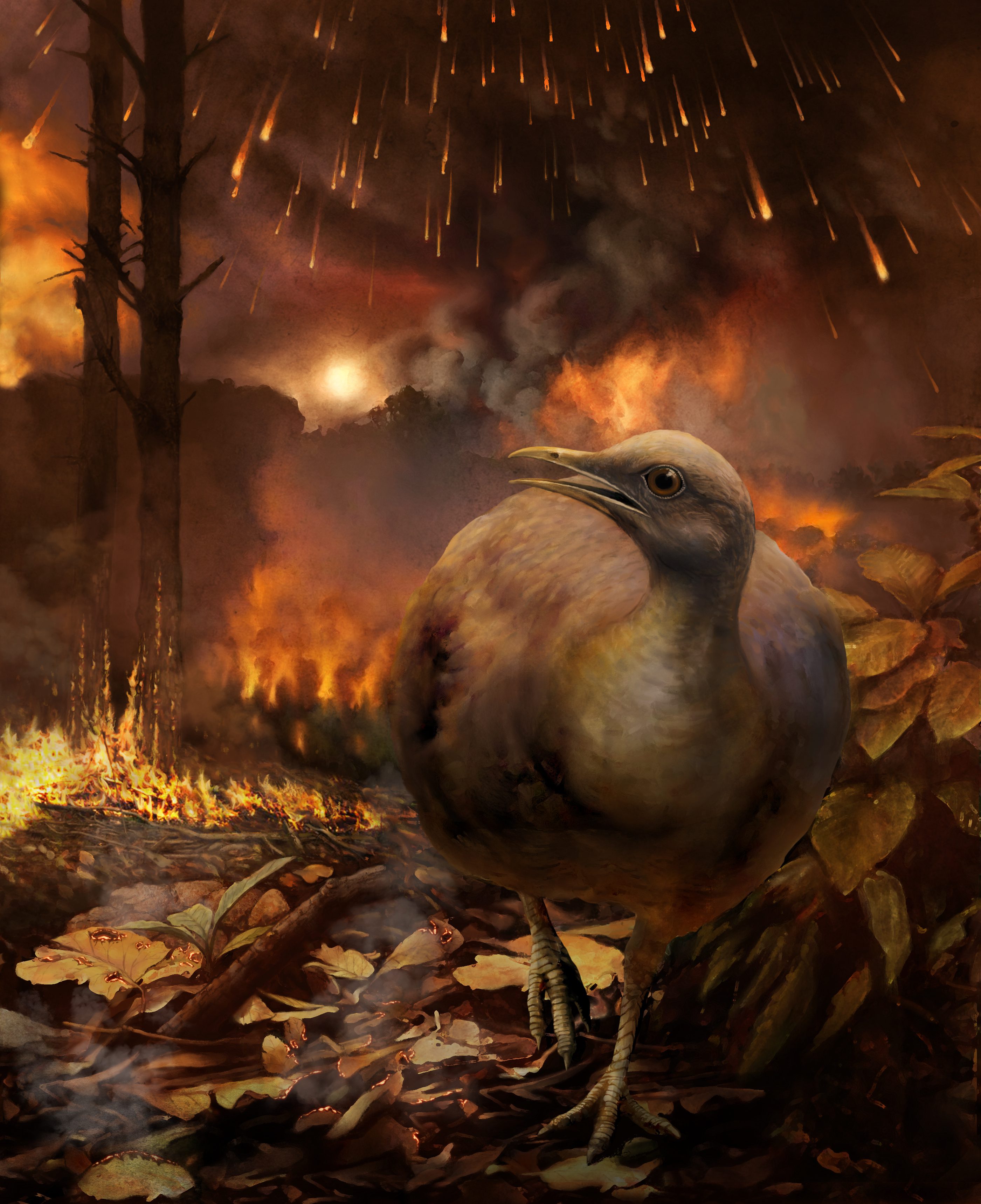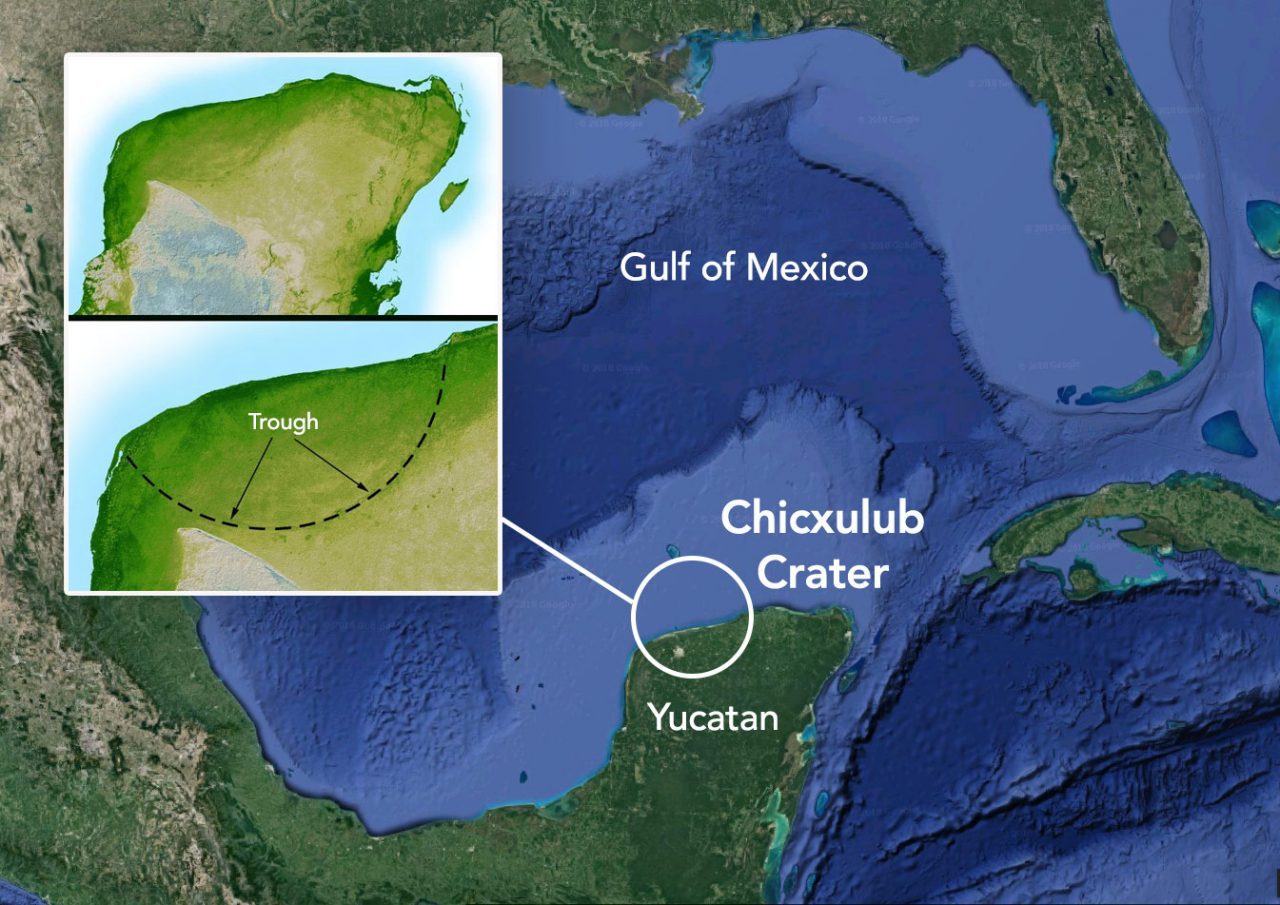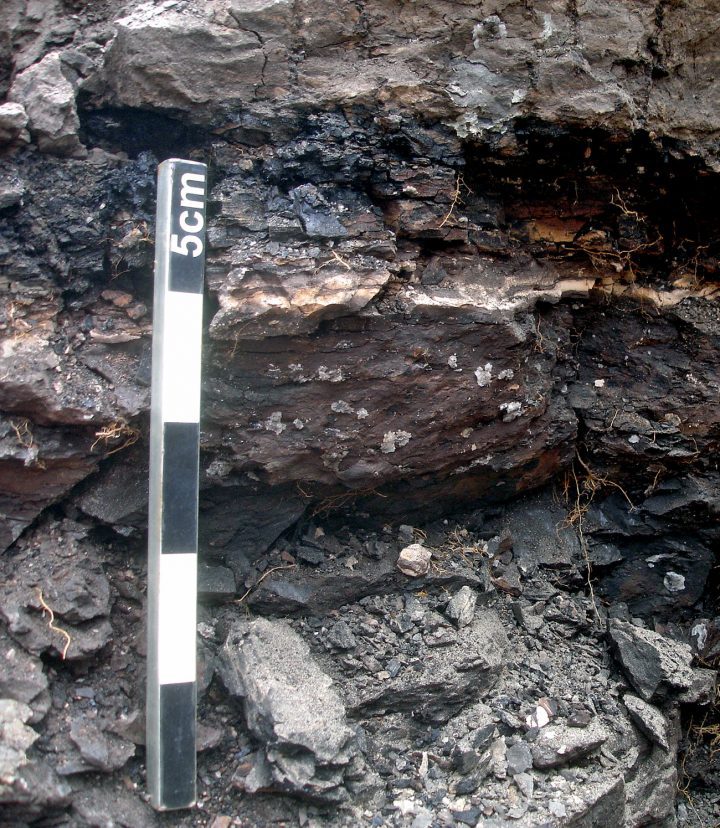Asteroid Impact Grounded Bird Ancestors
By Pat Leonard
May 24, 2018
A bird watcher straining to see a tiny tuft of feathers hopping in the treetops may find it hard to believe its ancient ancestors lived on the ground. An international team of scientists has concluded the asteroid that smashed into Earth 66 million years ago not only wiped out the dinosaurs, but erased the world’s forests and the species that lived in trees. The researchers say only small ground-dwelling birds survived the mass extinction, profoundly changing the course of bird evolution. Their findings were just published in the journal Current Biology.
“What this means is that all modern tree-dwelling bird lineages can trace their ancestry to non-tree-dwelling species in the wake of the asteroid impact,” says lead author Daniel Field of the Milner Centre for Evolution at the University of Bath in the United Kingdom. “It took about 1,000 years for the forests to regenerate. It took a lot longer for some bird species to evolve the shorter legs and grasping feet needed to perch and nest in trees.”
It’s estimated that the initial meteor impact at the end of the Cretaceous period (also known as the K-Pg event), blew down trees in a 1,500 km (932 miles) radius, leaving the 110-mile wide Chicxulub Crater on the lip of Mexico’s Yucatan peninsula. The effects were felt long after. Intense heat set off wildfires that turned forests into ash fields. Acid rain killed off even more vegetation. Soot in the atmosphere blocked the sun and prevented photosynthesis. A treeless world would not have been a pleasant place.
But the cataclysm left useful clues for scientists delving into ancient history. One line of inquiry for this study focused on a comparison of plant fossils, pollen, and spores from geological layers before, during, and after the asteroid hit. Some of the evidence comes from a place called John’s Nose in North Dakota.
“The John’s Nose site is one of several where you can clearly see differences in plant life before and after the mass extinction,” explains co-author and Smithsonian paleobotanist Antoine Bercovici. “We examined the geological layers at John’s Nose as well as at sites in New Zealand, Japan, and Europe. At all these locations we found a huge spike in fern growth immediately after the asteroid impact, which indicates the deforestation was global.”

Ferns are sometimes called “disaster plants” because they typically spread rapidly in areas that have been denuded of vegetation—a pattern that continues today in places devastated by human activities or natural disaster.

Study co-author and Cornell Lab of Ornithology doctoral candidate Jacob Berv used avian family trees (phylogenies) to infer the characteristics of birds in the distant past. This line of inquiry also led to the conclusion that, after the K-Pg event, the ancestors of modern birds had their feet on the ground.
“The avian family tree tells you about the hierarchical relationships among bird species,” Berv explains. “The group that’s the sister group to every other bird lineage today is known as the palaeognaths—including ostriches, cassowaries, kiwis, and so on—all ground-dwelling. From that and other related evidence we can infer that the bird ancestors that survived the asteroid impact were also likely to be ground birds.”
The fact that the paleobotanical (fossil plant) data agree with the bird data is one of the reasons the study authors are confident in their conclusions. Their research shows that every tree-dwelling bird today is the result of an eons-long tale of survival, and the product of uncounted evolutionary tweaks that allowed them to—at last—return to the trees.
Reference
Field D.J., Bercovici, A., Berv, J.S., Dunn, R., Fastovsky, D.E., Lyson, T.R., Vajda, V., Gauthier, J.A. (2018). Early Evolution of Modern Birds Structured by Global Forest Collapse at the End-Cretaceous Mass Extinction. Current Biology 28: 1-7.

All About Birds
is a free resource
Available for everyone,
funded by donors like you
American Kestrel by Blair Dudeck / Macaulay Library
